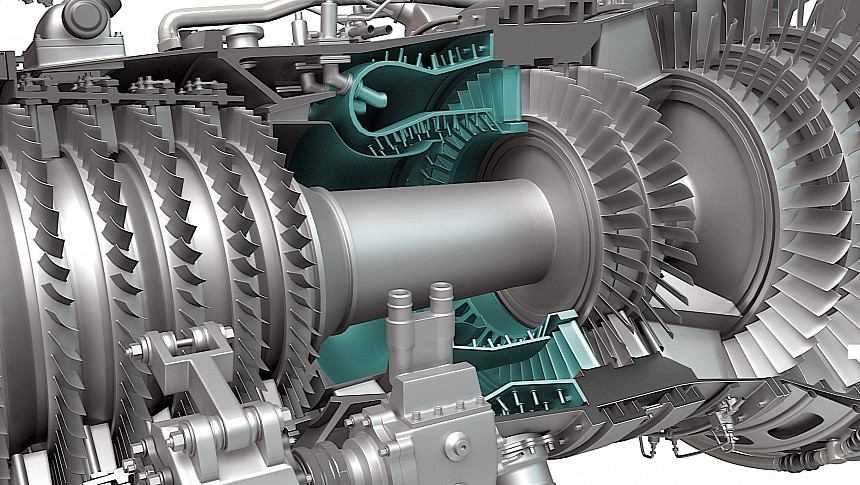It's been a while since we've heard anything relevant happening on the HyTEC front, but the wait seems to have been worth it: NASA's effort to reinvent the core of jet engines got a major boost this week as the program moved into Phase 2.
HyTEC is the abbreviation for Hybrid Thermally Efficient Core, and the expanded name says it all about the program's scope, really: find ways to reduce fuel consumption in airplane jet engines, while at the same time maintaining the same levels of thrust we're used to.
The idea first came into existence a couple of years ago, and has since burned through Phase 1. During that stage, Honeywell was selected to design an advanced low-pressure turbine for the HyTEC design, and later on Pratt & Whitney got on board to develop the combustor for the thing.
Separately, GE Aerospace was tasked during Phase 1 with demonstrating turbofan power extraction. That seems to have gone pretty well for the company, as it was now selected for Phase 2 and tasked with maturing the core demonstrator, but also testing it, including by burning 100 percent Sustainable Aviation Fuel (SAF). Integration of hybrid systems also falls upon GFE Aerospace.
NASA plans to have this first demo ready by the end of the decade. The main goal, at least for this phase, is to allow jet engines to cut their consumption needs by as much as ten percent.
The space agency plans to achieve this with a smaller core that could increase the bypass ratio, which is the ratio of how much of the air drawn in by the fan is turned into thrust, and how much of it is used for combustion and to keep the fan operational.
Presently, the Boeing 787 Dreamliner is the plane that has one of the best bypass ratios in the industry, nine. HyTEC however plans to take that to as much as 15, which would mean 15 times more air will be used for thrust than for combustion.
Doing so would mean the engine would burn less fuel, while keeping the same thrust levels as before.
The idea seems simple enough, but for it to be achieved the core of the jet engine would have to be downsized, and that's not as easy as it sounds. A smaller core translates into more internal pressure and higher temperatures, to levels that are difficult to sustain by present-day materials. On top of that, a smaller core would also mean a significant change in design ratios and even aerodynamics.
You might have noticed that the HyTEC program is about hybridization too. What that means is that NASA plans to also pull more electrical power from the engine to power the airplane's system. Engines already do that, but presently only about five percent of an engine's power goes to generating electricity. The target in the HyTEC is 20 percent, a huge jump from present-day levels.
If everything goes according to plan, NASA should have a design ready by the end of this decade, and some of these new engines should be in the air by the middle of the next one.
The idea first came into existence a couple of years ago, and has since burned through Phase 1. During that stage, Honeywell was selected to design an advanced low-pressure turbine for the HyTEC design, and later on Pratt & Whitney got on board to develop the combustor for the thing.
Separately, GE Aerospace was tasked during Phase 1 with demonstrating turbofan power extraction. That seems to have gone pretty well for the company, as it was now selected for Phase 2 and tasked with maturing the core demonstrator, but also testing it, including by burning 100 percent Sustainable Aviation Fuel (SAF). Integration of hybrid systems also falls upon GFE Aerospace.
NASA plans to have this first demo ready by the end of the decade. The main goal, at least for this phase, is to allow jet engines to cut their consumption needs by as much as ten percent.
The space agency plans to achieve this with a smaller core that could increase the bypass ratio, which is the ratio of how much of the air drawn in by the fan is turned into thrust, and how much of it is used for combustion and to keep the fan operational.
Presently, the Boeing 787 Dreamliner is the plane that has one of the best bypass ratios in the industry, nine. HyTEC however plans to take that to as much as 15, which would mean 15 times more air will be used for thrust than for combustion.
Doing so would mean the engine would burn less fuel, while keeping the same thrust levels as before.
The idea seems simple enough, but for it to be achieved the core of the jet engine would have to be downsized, and that's not as easy as it sounds. A smaller core translates into more internal pressure and higher temperatures, to levels that are difficult to sustain by present-day materials. On top of that, a smaller core would also mean a significant change in design ratios and even aerodynamics.
You might have noticed that the HyTEC program is about hybridization too. What that means is that NASA plans to also pull more electrical power from the engine to power the airplane's system. Engines already do that, but presently only about five percent of an engine's power goes to generating electricity. The target in the HyTEC is 20 percent, a huge jump from present-day levels.
If everything goes according to plan, NASA should have a design ready by the end of this decade, and some of these new engines should be in the air by the middle of the next one.





